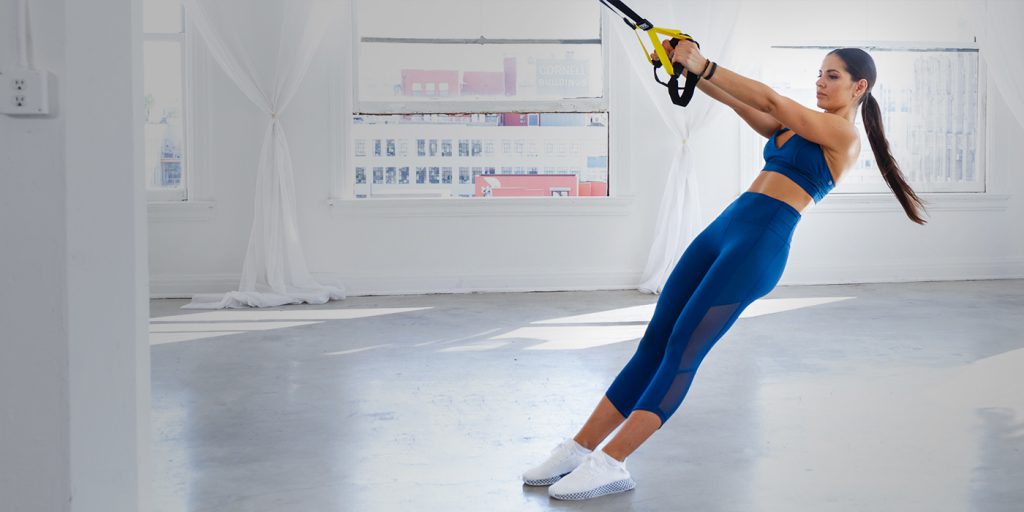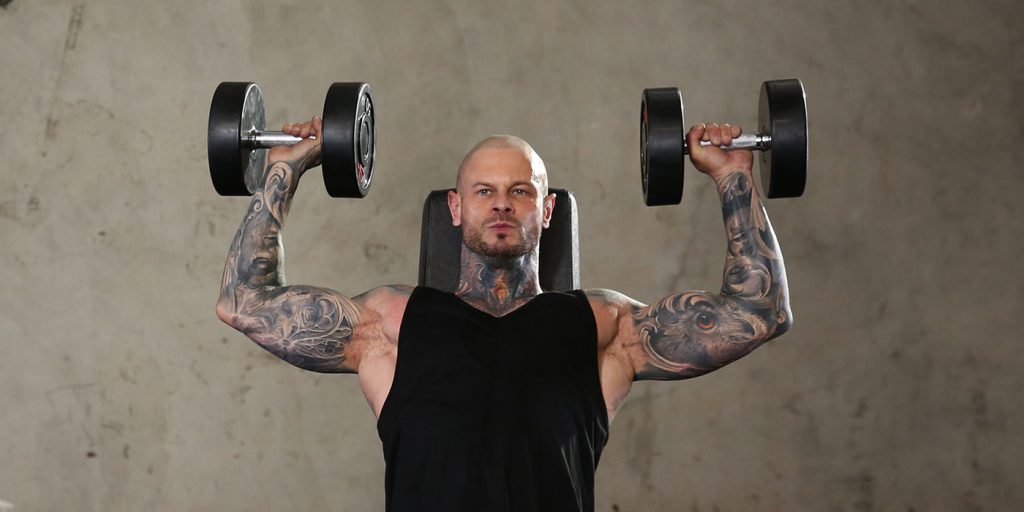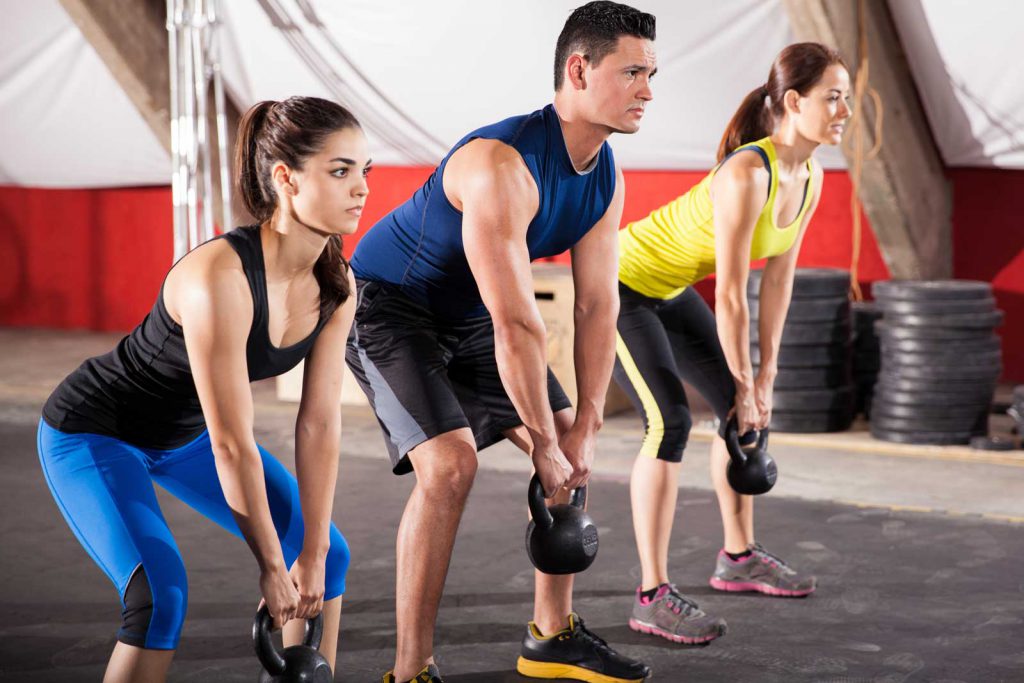Pull-ups are one of the best back exercises around. As a compound exercise that targets several of your most important back muscles, pull-ups are virtually unparalleled. While they don’t require much more than a horizontal bar, even that can be difficult to come by if you don’t have time for the gym.
Luckily, there are plenty of great pull-up alternatives that have similar activation levels for the muscle groups involved in the traditional version of the exercise. Not only can you use these when you don’t have a horizontal bar available, but you can also use them to build up the strength you need to get to that first pull-up or up your pull-up count if you plateau.
Read on for the 5 best pull-up alternatives that you can do at home without a horizontal bar.
(Note: Want our elite trainers to help you tone and strengthen your back? Start your Fitplan free trial today!)
What Do Pull-Ups Do?
People have good reasons for wanting to increase their pull-up count. Pull-ups are a great compound exercise that builds important functional strength in your upper body and one of the best back workouts you can get. If you’re looking for a broad, chiseled back, pull-ups are essential.
Pull-ups also build grip strength that will help in other exercises like bench presses and flipping tires. We also use grip in everyday life for a multitude of tasks. An international study completed in 2009 found that for every 11-pound decrease in grip strength, participants faced a 17% higher risk of dying from heart disease and a 16% higher risk of dying from any cause.
Muscles Targeted by Pull-Ups
Once you understand which specific muscles pull-ups activate you’ll be able to pick the best alternative exercises to work the same targets. Here are the main muscles worked by pull-ups:
Trapezius
Your traps are located on the back of your neck and they extend out to the shoulders. It helps support the scapula, also known as the shoulder blade. The upper part of the trapezius supports arm weight while the middle and lower sections are primarily responsible for moving the shoulder blade.
Latissimus Dorsi
The largest muscle in your upper body, the latissimus dorsi aids shoulder movements and pulls the trunk upward when your arms are raised above your head. It also helps with the movement of the lumbar spine, which the lower section of the spine just above the tailbone. In addition to various stabilizer muscles, lat workouts generally also activate the long head of your triceps and your deltoid muscles.
Infraspinatus
Although smaller than your traps and lats, the infraspinatus muscle is a crucial part of the four muscles in your rotator cuff. It’s involved in the movement of the humerus bone, which stretches from the shoulder to the elbow beneath your biceps. Since it also stabilizes the shoulder joint, the infraspinatus will help reduce pain and prevent injury in key upper body joints if you strengthen it.
Thoracic Erector Spinae
There are muscles called the erector spinae that run along the length of your spine and help it move. The thoracic section of these muscles is the longest section of the spine, connecting the cervical section in your neck and the lumbar section in the lower back. Building strength in the thoracic erector spinae will help avoid injury and build better posture.
Helpful Hint: Give your entire posterior chain a workout with our Kettlebell Power Fitplan!
Can You Do Pull-Ups Without a Pull-Up Bar?
Great news for anyone who doesn’t have time to hit the gym or wants to get in some quick exercise at their desk during a break at work: it’s possible to target all the muscles we just mentioned without a pull-up bar. There are even a few ways to do regular pull-ups without the bar.
Anything you can hold onto with both hands in an overhand grip could be suitable for ad hoc pull-ups. Just make sure it’s sturdy enough to hold your body weight and high enough for you to get into a dead hang without your feet touching the floor.
Doors, tree branches, and fences are all possible options if you can’t find a horizontal pull-up bar around.
(Note: You can download the Fitplan App for free on Google Play!)
Pull-Up 101: Steps & Form Tips
- Before we get into all the variations, it’ll be helpful to review the correct form and procedure of traditional pull-ups. It’s a fairly straightforward exercise but also very easy to do incorrectly. To get the full benefits out of your pull-ups, follow these steps:
- Approach the pull-up bar and stand underneath it. Reach above your head and grab onto the bar with both hands. It should be an overhead grip, meaning your palms should be facing away from your body. Your hands should be as close to shoulder-width as you can get them. If you’re a seasoned gym rat, you can make your pull-ups more challenging by placing your hands farther apart or closer together. This will limit your range of motion and push your lats harder.
- Get into a dead hang by lifting your feet off the floor. Engage your core muscles and make sure your shoulders are pushed back. This is the starting position for a traditional pull-up.
- Pull with your lats and shoulder blades so that your body is lifted toward the bar. If you need additional balance, cross one leg over the other. When your head is above the bar, you’ve completed the first half of the exercise.
- Slowly lower yourself back to the starting position, careful not to let your muscles give out since a sudden drop would be terrible for your shoulder and elbow joints. You can decide whether you want to go all the way back to a dead hang or stop just before and repeat another rep.
Helpful Hint: Try The Titan Challenge Fitplan to build more pull-up strength!
Variations on Traditional Pull-Ups
Some people only alter their pull-up styles slightly. For example, you might insert an isometric pause at the top of the movement before you lower yourself back to the starting position. Other folks change up the grip style, using an underhand grip like you would in a chin-up or a mixed grip style in which one hand is facing out and the other facing in.
If you’re already a pull-up expert, you can increase your pull-up count by adding weight to your legs. There’s also the plyometric pull-up, a favorite calisthenics exercise during which you switch both hands from an overhand grip to an underhand one in the air on every other rep.
Plyo-pull-ups are very challenging and take lots of practice to master, but if your pull-up count is already fairly high you should consider adding this explosive movement to your workout routine once or twice a week.
5 Best No-Bar Pull-Up Alternatives
There are many more pull-up alternatives that don’t require a bar, but these 5 are the most effective and require the least amount of additional gear. You can use them to build your pull-up strength if you can’t seem to get that first pull-up in the bag or anytime you want to do pull-ups at home and don’t have a pull-up bar available.
1. Bodyweight Rows
Bodyweight rows are commonly combined with scapular stabilization exercises by people who are trying to increase their pull-up count. You may have seen people doing them at the gym – they look like upside-down push-ups and are traditionally done with a horizontal bar that’s close to the ground. However, you don’t need a bar for this version.
Gear Needed: A towel or resistance band, a door or sturdy table
How It’s Done: If you have a sturdy table, lie underneath it and grab onto the top of the table with your fingertips. Leave your ankles on the ground so that your body is a diagonal line. Pull yourself up until your chest is almost to the table and then lower back to the starting position.
If you don’t have a sturdy table suitable for this exercise, you can take a towel or resistance band and throw it over a door and close the door so that a bit of the material is stuck in the door. Grab onto the towel and lean back until you have completely straight arms and your body is diagonal.
From there, you can pull yourself up until your elbows are fully retracted and then return to the starting position.

2. Kneeling Lat Pulldowns
If you’re like the vast majority of people who don’t have a lat pulldown machine at home, you can use this simple exercise to get the same effect. All you need is a resistance band and something elevated to secure it. You might use something like a coat hook or you could close one end of the resistance band in a door frame.
Gear Needed: Resistance band & attachment point
How It’s Done: Attach the resistance band so that it’s secure and then take either end in each hand. Next, you want to kneel, which you can do on one or both knees. Pull on the resistance band until your elbows are at right angles.
Pull your shoulder blades in simultaneously as your arms come down. Slowly lift the band until your arms are straight again. This exercise is about as simple as it gets, perfect for a warm-up or quick morning routine to wake up a bit.
If you want to target your rhomboid muscle and your lats, this is a nice, simple way to do so.
Helpful Hint: Learn more resistance band exercises you can do anywhere with our Fit From Home Fitplan!
3. Overhead Dumbbell Press
The movement of a seated overhead dumbbell press is similar to the one involved in the kneeling lat pulldowns. However, the seated overhead dumbbell press allows you to add weight and exhaust your muscles in a way that the resistance band used for kneeling lat pulldowns just can’t. The overhead dumbbell press can also be done sitting or even in the course of a lower-body exercise like a lunge.
Gear Needed: Dumbbells or a barbell, chair optional
How It’s Done: Although it requires a little bit more equipment than the bodyweight exercises we’ve mentioned, the overhead dumbbell press is still very straightforward. All you have to do is take a dumbbell in each hand and then hold your arms out straight to your left and right. Bend your elbows to 90° and make sure your palms face your body.
This will be your starting position. Next, raise both dumbbells as high as possible so your arms straighten in the air and the weights are above your head. Slowly bring them back down to the starting position for one rep.
The most important form note for an overhead press is that your shoulders should be slightly in front of your body and not pushed back to be even with or behind your chest. You could be risking serious injury if you don’t use this form.

4. Back Bridge Push-Ups
This push-up variation is a fantastic bodyweight exercise that will give your glutes and hamstrings a workout in addition to building your upper back muscles and erector spinae. Imagine a sort of inside-out and upside-down push-up and you have the basic idea. Build a strong posture as well as pull-up strength with this bodyweight exercise.
Gear Needed: Nothing, just floor space
How It’s Done: A back bridge is usually challenging to people when they first try it, but basically what you should be doing is lying on your back with your feet flat on the ground sort of like you’re about to do a sit-up. Then, put your hands up near your head so that your palms are flat and your fingers point down toward your feet.
This position might sound impossible, but once you get down and try it you’ll find it’s easier than you think. Lift your hips so that your back rounds and push your head backward so that your head is near the floor. Push through your shoulders to maintain balance and once you’re fully rounded into an arc,
Lower your forehead to the ground and bend your arms just like you would in a push-up and then lift again to return to the starting position.
5. Kettlebell Swings
You just can’t beat the mixture of simplicity and compound muscle-targeting that kettlebell swings give you. The exercise is based on the momentum built up during the swing and allows your body to build functional strength as well as huge muscles. Best of all, this move also burns fat like nobody’s business, which is great news for people on a weight loss program or in their latest cutting phase.
What’s Needed: Kettlebell, plenty of space
How It’s Done: Stand with your feet shoulder-width apart and the kettlebell on the ground between your legs. Hinge at your hips and bend your knees slightly so that you can bend down and pick up the kettlebell by its handle with both hands. Pull the kettlebell behind you through your legs to give it some momentum, then swing it out and up until it reaches shoulder height and your arms are straight.
Let the kettlebell drop back down through your legs and repeat the whole movement. Your whole posterior chain is used throughout this exercise so don’t focus too much on your biceps or other upper body muscles as you swing the kettlebell. There are also one-handed and mixed variations of this exercise too.

Helpful Hint: Build strength in your posterior chain with the exercises in our SommerFit Fitplan!
How to Plan a Home Workout for Pull-Up Strength
You don’t necessarily have to use all five of the exercises in this guide every single day. Feel free to use a couple of them or switch between different variations to keep your body guessing. The bodyweight exercises can be used as a warm-up or cool-down on either end of the more strenuous exercises.
If you have a home gym or you can get to the regular gym from time to time to do traditional pull-ups with a horizontal bar, you’ll be getting the best of both worlds. The compound workout you’ll get from these five exercises and traditional workouts will build huge muscles in your upper body and back.
Conclusion
Whether you just don’t have time to hit the gym or you’re trying to build your pull-up strength whenever you have a spare moment, these straightforward exercises are ideal because they don’t require much equipment or technique to execute. As long as you pay close attention to your form you can avoid injury and sneak in a bit of exercise throughout your day.
Hopefully, this guide has helped illustrate all the different ways you can target your pull-up muscles even when you don’t have a bar handy. Give these exercises a try and you’ll be amazed how fast you can rack up gains and increase your traditional pull-up count.
(Note: Want our elite trainers to help you tone and strengthen your back? Start your Fitplan free trial today!)


